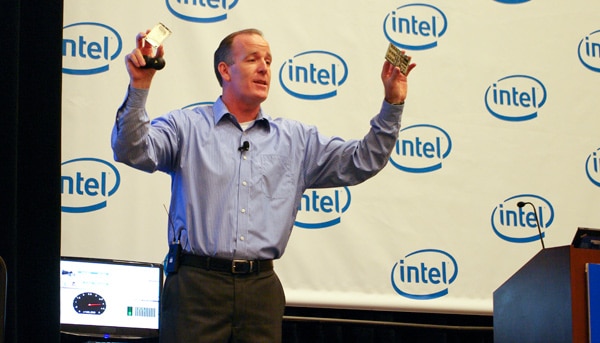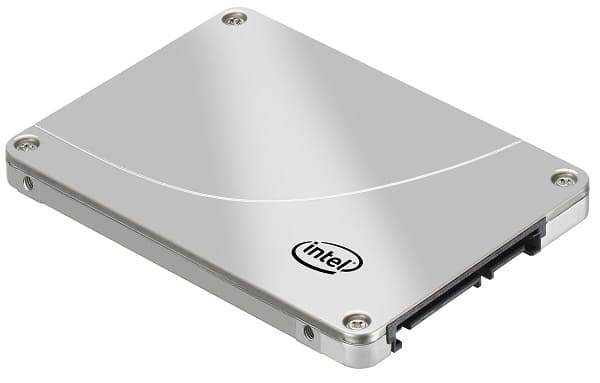At Intel Developer Forum 2011 today, Intel released their new HET MLC-based enterprise-grade SSD 710. Available in capacities ranging from 100 to 300GB, this drive offers speeds up to 270MB/s read and 210MB/s write with 30-times the endurance of consumer SSDs. With write endurance up to 1.5PB depending on over-provisioning, this drive is sure to turn eyebrows in datacenters everywhere.

One of the key features of the new Intel SSD 710 is the shift away from SLC NAND found in the older 32 and 64GB X25-E enterprise SSD and instead moving towards MLC flash with high-endurance optimized firmware. This allows 100, 200, and 300GB capacities for much affordable prices while still maintaining similar write endurance figures. Intel also allows the end-user to specifically adjust the over-provisioning from 1 to 50% to allow customers to match SSD performance and reliability figures with what is required in the deployed environment.

Intel SSD 710 Specifications:
- Capacity: 100/200/300 GB
- Intel® 25nm NAND Flash Memory
- High Endurance Technology (HET) Multi-Level Cell (MLC)
- Form Factor: 2.5-inch
- Random 4 KB Reads: Up to 38,500 IOPS
- Random 4 KB Writes: Up to 2,700 IOPS (4,000 IOPS3)
- Random 8 KB4 Reads: Up to 27,000 IOPS
- Random 8 KB Writes: Up to 1,900 IOPS (6,000 IOPS3)
- Bandwidth Performance, Sustained Sequential Read: Up to 270 MB/s, Sustained Sequential Write: Up to 210 MB/s
- Latency (average sequential), Read: 75 μs (TYP), Write: 85 μs (TYP)
- AES 128-bit Encryption
- Temperature monitoring




 Amazon
Amazon